In the ever-evolving landscape of software development, a new concept has emerged, promising to reshape the way we think about applications.Polymorphic applications, the focal point of this discussion, bring a paradigm shift that challenges conventional software development approaches.
These applications possess the remarkable ability to adapt, evolve, and even transform themselves in pursuit of a predefined mission. This article delves into the realm of polymorphic applications, exploring their profound significance and the role of cognitive architectures in ushering in the next generation of software paradigms.
Understanding Polymorphic Applications
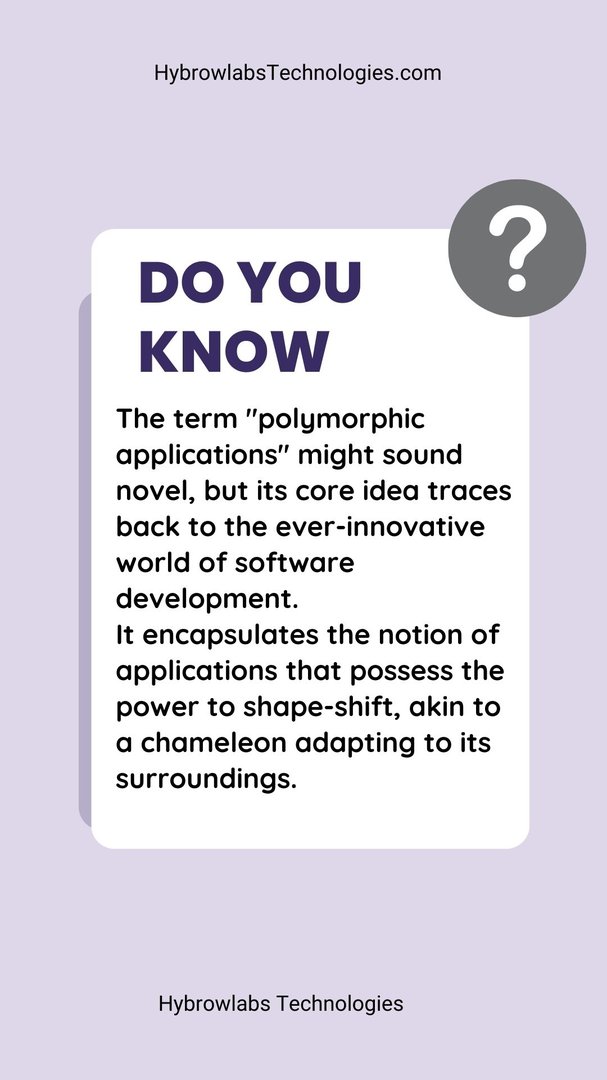
A. The Origin of Polymorphic Applications
The term "polymorphic applications" might sound novel, but its core idea traces back to the ever-innovative world of software development. It encapsulates the notion of applications that possess the power to shape-shift, akin to a chameleon adapting to its surroundings. This concept challenges traditional notions of static software and introduces a dynamic, transformative approach.
B. The Self-Changing Paradigm
At the heart of polymorphic applications lies a revolutionary idea: applications that can evolve and change their behavior based on the context and their predefined mission. This means software that goes beyond the confines of its original design, seamlessly reconfiguring itself to tackle new challenges. This self-changing paradigm opens doors to applications that not only serve their purpose but actively participate in shaping their own capabilities.
The Role of AI in Polymorphic Applications
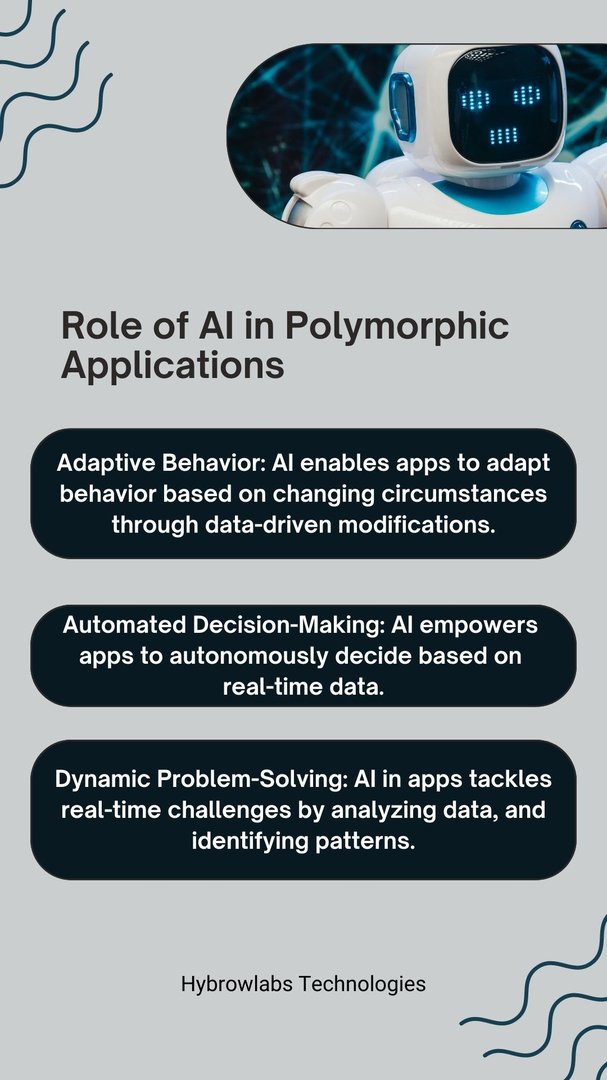
A. AI's Pioneering Role
The vision of polymorphic applications finds an ally in the advancements of artificial intelligence. Microsoft CEO Satya Nadella's proclamation of AI's arrival ushers in a new era of possibilities. AI is no longer confined to mere automation; it now possesses the potential to fundamentally transform software paradigms.
B. The Duo: Natural Language Interfaces and Reasoning Engines
Nadella's insights highlight two essential components of the AI revolution: natural language interfaces and reasoning engines. The former empowers applications with intuitive communication capabilities, enabling voice commands, chat interactions, and more. The latter, reasoning engines, serves as the intellectual powerhouse of these applications, driving them to think, learn, and make decisions like never before.
C. The Significance of Reasoning Engines
At the heart of cognitive architectures that enable polymorphic applications, reasoning engines stand as the cornerstone. These engines elevate AI from a tool to an intelligent agent, capable of brainstorming, problem-solving, and even coding. It's the realization of a cognitive engine that brings reasoning, planning, and decision-making into play, laying the foundation for a new era of AI-driven software development.
As we delve deeper into this exploration of polymorphic applications, we uncover how these cognitive architectures are poised to reshape the very foundations of software development. In the subsequent sections, we will unravel the interplay between mission-driven programming, autonomy, and adaptable frameworks that constitute the NEXT-GEN paradigms in the world of software engineering.
Cognitive Architecture and Mission-Oriented Programming
In the ever-evolving landscape of software development, the emergence of mission-oriented programming (MOP) marks a transformative shift from the traditional object-oriented programming (OOP) paradigm. This radical departure from OOP has given rise to the concept of polymorphic applications that embody purpose-driven software development.
A. The idea of mission-oriented programming as a paradigm shift from object-oriented programming.
In the realm of object-oriented programming, software is structured around objects and their interactions. However, mission-oriented programming reimagines the software development process by placing missions at the forefront. Rather than concentrating on individual objects, MOP centers on clear, purposeful missions that guide every aspect of an application's existence.
B. Mission-oriented programming as a software development approach centered around clear, purposeful missions.
Mission-oriented programming is characterized by its focus on defining missions that encapsulate the desired goals and outcomes of an application. These missions serve as the driving force behind the software's behavior, decision-making, and evolution. Each mission is carefully crafted to align with an application's purpose, providing a cohesive framework for development.
C. How missions drive software behavior, adaptation, and evolution, leading to polymorphic applications.
The missions set in mission-oriented programming dictate an application's actions, reactions, and responses. As the application progresses, it adapts and evolves to meet changing objectives while adhering to its overarching mission. This dynamic behavior results in the creation of polymorphic applications that possess the ability to change form and behavior as circumstances warrant.
Components of Polymorphic Applications
Polymorphic applications represent the culmination of mission-oriented programming, where the various components synergize to create adaptable, purpose-driven software entities.
A. Mission-centric design
At the heart of a polymorphic application lies a mission-centric design approach. This involves shaping the application's architecture, features, and functionality around the defined mission. This alignment ensures that every aspect of the application contributes to its overarching purpose.
B. Autonomy and agency
Polymorphic applications are not passive tools; they exhibit a remarkable degree of autonomy and agency. Empowered by the mission, these applications possess the ability to make decisions, take actions, and adapt to changing circumstances independently.
C. Adaptability and flexibility
The nature of polymorphic applications inherently equips them with adaptability and flexibility. They can adjust, modify, and transform their behavior and structure to align with evolving mission requirements and external factors.
D. Dynamic tool creation
One of the key features of polymorphic applications is their capacity for dynamic tool creation. These applications can generate new tools, functionalities, or components on-demand, enhancing their problem-solving capabilities and enabling efficient decision-making.
Automation Capabilities and Why One Should Turn To Polymorphic Applications
The transformative potential of polymorphic applications is augmented by the advanced capabilities of language models and generative AI.
A. The automation capabilities of language models (LLMs) and generative AI.
Language models and generative AI have revolutionized automation in software development. Beyond generating text, these systems can automate complex tasks, making them an essential tool for creating polymorphic applications.
B. how LLMs can automate various tasks, including problem-solving, decision-making, and planning.
The cognitive capabilities of language models empower them to automate diverse tasks, such as analyzing data, identifying patterns, and making informed decisions. This automation capability enhances an application's problem-solving prowess and strategic decision-making.
C. The concept of an on-demand tool factory and its role in creating polymorphic applications.
Central to the concept of polymorphic applications is the on-demand tool factory. This innovative idea empowers applications to generate and assemble tools and components as required, aligning with the mission's objectives and ensuring seamless adaptability.
The union of mission-oriented programming, cognitive architectures, and the capabilities of advanced AI ushers in the era of polymorphic applications. These applications, driven by clear missions and empowered by automation, have the potential to reshape the landscape of software development, ushering in the next generation of paradigms.
Building Blocks of Polymorphic Applications
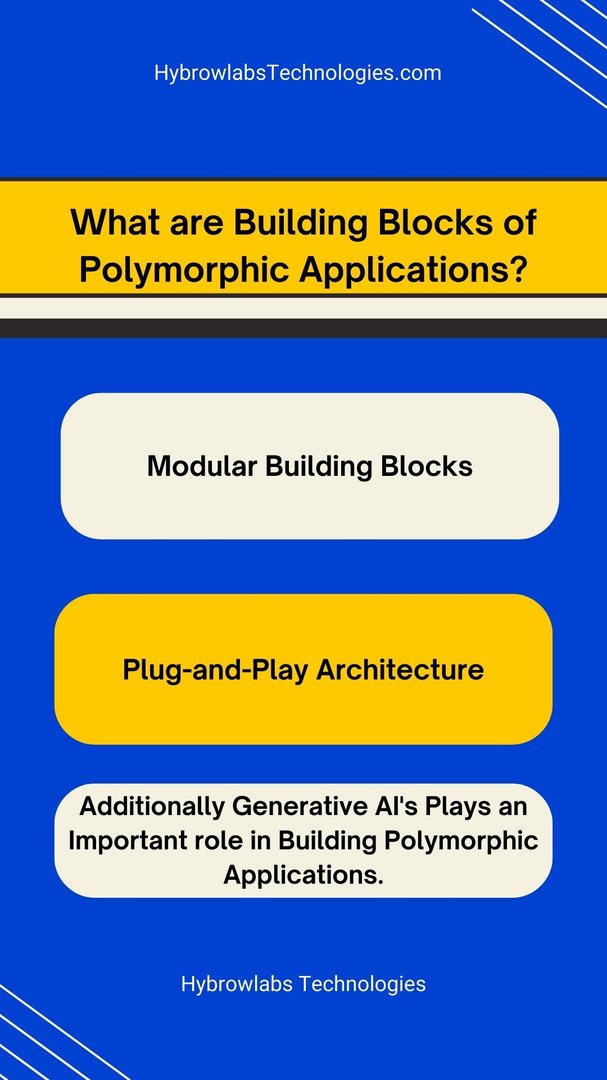
A. Creating Modular Building Blocks:
- Developing polymorphic applications involves breaking down complex functionalities into modular building blocks.
- Each building block serves a specific purpose, making it easier to manage, update, and replace individual components.
- Modularization enhances flexibility, scalability, and adaptability of the application.
B. Plug-and-Play Architecture:
- Imagine polymorphic applications as a set of Lego blocks that can be easily interconnected.
- The plug-and-play architecture allows these building blocks to seamlessly integrate with one another, forming a cohesive whole.
- This approach enables developers to rapidly assemble, disassemble, and rearrange functionalities based on changing requirements.
Cognitive Architecture and Autonomous Entities
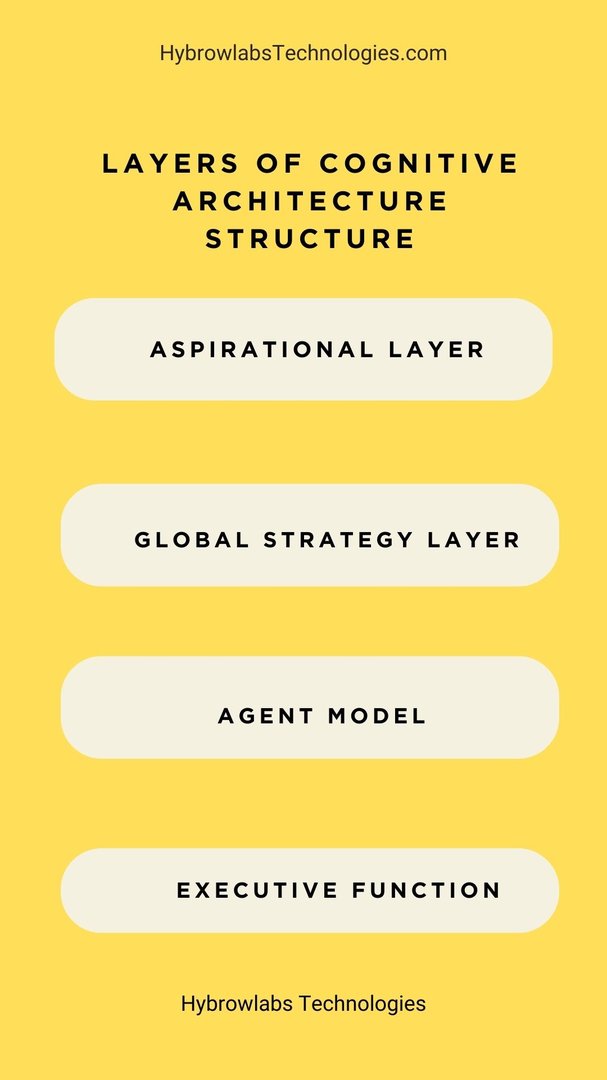
The ACE model (Autonomous Cognitive Entities) offers a structured framework for developing advanced cognitive architectures. It enables the creation of AI entities with high levels of autonomy, adaptability, and decision-making capabilities.
A. Aspirational Layer:
- The aspirational layer defines the mission, values, ethics, and purpose of the cognitive entity.
- It sets the guiding principles that shape the behavior and decision-making of the entity.
- This layer ensures that the AI's actions align with human-defined goals and values.
B. Global Strategy Layer:
- The global strategy layer focuses on long-term vision and contextual understanding.
- It enables the AI entity to plan and make decisions that align with overarching objectives.
- Contextual awareness enhances the entity's ability to adapt to changing environments and requirements.
C. Agent Model:
- The agent model endows the AI entity with self-awareness, understanding its capabilities and limitations.
- This layer facilitates adaptive decision-making by enabling the entity to assess its strengths and weaknesses.
- Self-awareness empowers the entity to seek solutions, collaborate with other entities, and learn from its experiences.
D. Executive Function:
- The executive function layer is responsible for planning, forecasting, and guiding the AI's actions.
- It enables the entity to create strategies, anticipate challenges, and prioritize tasks.
- This layer ensures that the AI entity's actions are aligned with its mission while considering real-time circumstances.
Implementing Cognitive Architecture
A. Importance of Each Layer in the ACE Model
Implementing the ACE model (Autonomous Cognitive Entities) is essential for realizing the potential of polymorphic applications that are driven by missions and cognitive architectures. Each layer within the ACE model serves a distinct purpose in creating truly autonomous entities capable of self-evolving behavior.
- Aspirational Layer: Mission and Values
The aspirational layer sets the foundation by defining the mission, values, purpose, ethics, and morals that guide the behavior of the cognitive entity. This layer ensures that the entity's actions align with its intended purpose and adhere to the broader values of the organization or society.
- Global Strategy Layer: Long-Term Vision and Context
The global strategy layer provides the entity with long-term thinking and context. It enables the entity to make decisions that align with the overarching vision while considering the evolving circumstances and external factors. This layer helps prevent short-sighted decisions and ensures consistency in pursuit of the mission.
- Agent Model: Self-Awareness and Adaptability
The agent model empowers the cognitive entity with self-awareness and adaptability. By understanding its capabilities and limitations, the entity can make informed decisions that lead to effective problem-solving and decision-making. This layer also facilitates the entity's ability to evolve and adapt to new challenges, technologies, and requirements.
- Executive Function: Planning and Directives
The executive function layer equips the entity with planning capabilities and the ability to follow directives. This layer enables the entity to forecast potential challenges, develop strategic plans, and execute tasks in alignment with its mission. It ensures that the entity's actions are purposeful and well-coordinated.
B. Balancing Autonomy and Values
Unchecked autonomy in AI systems can lead to unintended consequences and ethical dilemmas. Cognitive architecture plays a vital role in mitigating these risks by providing a structured framework that enforces alignment with higher-level values and ethical principles. The ACE model's aspirational layer ensures that the cognitive entity's behavior is in line with its mission and ethical guidelines, preventing actions that deviate from its intended purpose.
- Preventing Negative Outcomes
Cognitive architecture helps in identifying and preventing actions that might lead to negative outcomes or conflicts with broader societal values. The layers within the ACE model act as checks and balances, ensuring that the entity's autonomy is tempered by ethical considerations and long-term goals.
- Promoting Responsible Autonomy
By implementing cognitive architecture, organizations can strike a balance between AI autonomy and responsible decision-making. The ACE model's design fosters a sense of responsibility within the AI entity, encouraging it to make choices that contribute positively to its mission and avoid harm to stakeholders.
C. Advancing Self-Evolving Capabilities
The ACE model holds the potential to revolutionize the capabilities of AI entities, enabling them to become more than just tools. Through cognitive architecture, AI entities can exhibit self-evolving behavior that adapts to changing contexts, learns from experiences, and improves its problem-solving and decision-making over time.
- Iterative Learning and Improvement
The agent model's self-awareness and adaptability allow AI entities to engage in iterative learning and improvement. As the entity interacts with its environment and carries out its mission, it can refine its strategies, refine its decision-making processes, and optimize its performance.
- Empowering AI-Driven Innovation
The ACE model empowers AI entities to become active agents in pursuing their missions. As these entities continuously evolve, they can contribute to groundbreaking innovations, address complex challenges, and generate insights that would be difficult to achieve through traditional methods.
Conclusion
The emergence of polymorphic applications and the implementation of cognitive architectures mark a significant shift in software development paradigms. By integrating the ACE model's layers into the design of AI entities, organizations can create advanced systems that operate autonomously, align with values, and possess self-evolving capabilities. As the technology landscape evolves, these next-gen paradigms are poised to reshape industries and pave the way for a future where AI entities are dynamic, purposeful, and responsible contributors to society. For more software development related services visit at hybrowlabs website and check different software solutions as per your requirement.
FAQ
1. What are polymorphic applications in software development?
Polymorphic applications refer to a new paradigm of software architecture where applications are designed to be self-changing and adaptive based on their defined mission. These applications can modify their behavior, adapt to new challenges, and evolve over time to fulfill their intended purpose more effectively.
2. How do cognitive architectures contribute to polymorphic applications?
Cognitive architectures, like the ACE model (Autonomous Cognitive Entities), provide a structured framework for creating advanced AI entities. Each layer within the cognitive architecture, such as the aspirational layer, global strategy layer, agent model, and executive function, ensures that the AI entity is self-aware, adaptable, and aligned with its mission and values.
3. What role does mission-oriented programming play in polymorphic applications?
Mission-oriented programming is a paradigm shift from traditional object-oriented programming. It involves designing and building applications around clear, measurable, and purposeful missions. These missions serve as the core driver of the application's behavior, adaptation, and evolution, leading to the creation of polymorphic applications.
4. How do polymorphic applications balance autonomy and ethical considerations?
Polymorphic applications maintain a balance between autonomy and ethics through cognitive architectures. The cognitive architecture, such as the ACE model, ensures that AI entities operate within predefined ethical boundaries and adhere to higher-level values. This prevents unchecked autonomy and promotes responsible decision-making aligned with the entity's mission.
5. What advantages do polymorphic applications offer over traditional software?
Polymorphic applications provide several advantages, including:
- Adaptive Behavior: Applications can change and evolve to address new challenges.
- Efficient Problem-Solving: AI entities within these applications can engage in problem-solving and decision-making autonomously.
- Mission-Centric Design: Applications are purpose-driven, leading to more focused and effective outcomes.
- Innovation: AI-driven self-evolving capabilities contribute to innovative solutions.
- Responsiveness: Polymorphic applications can dynamically adjust to changes in their environment or mission requirements.



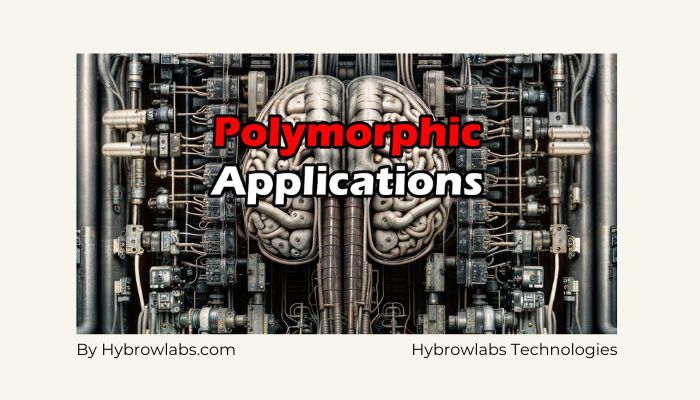


a3dc85.jpg)
.jpg)
fd8f11.png)


.jpg)
.jpg)